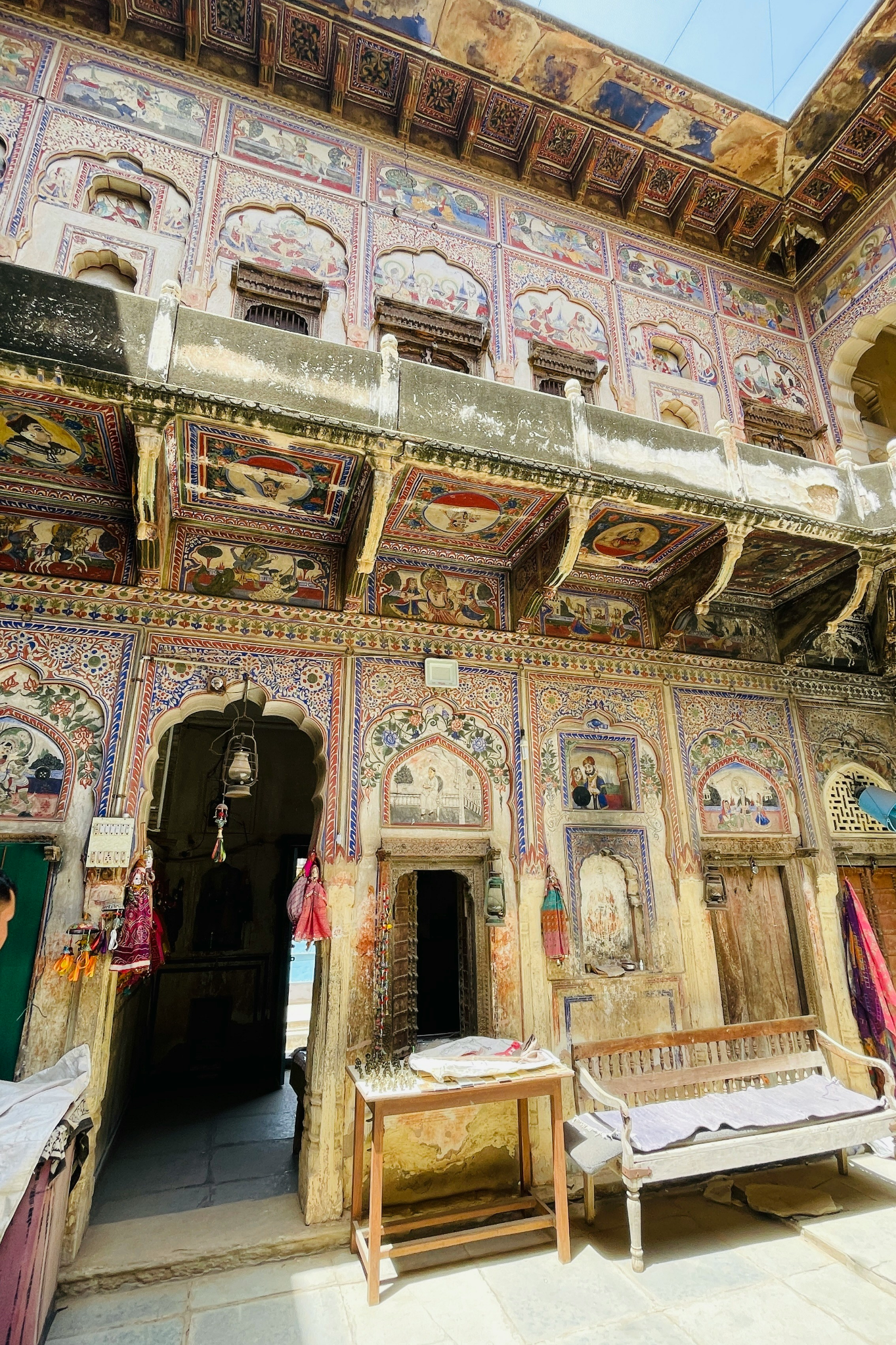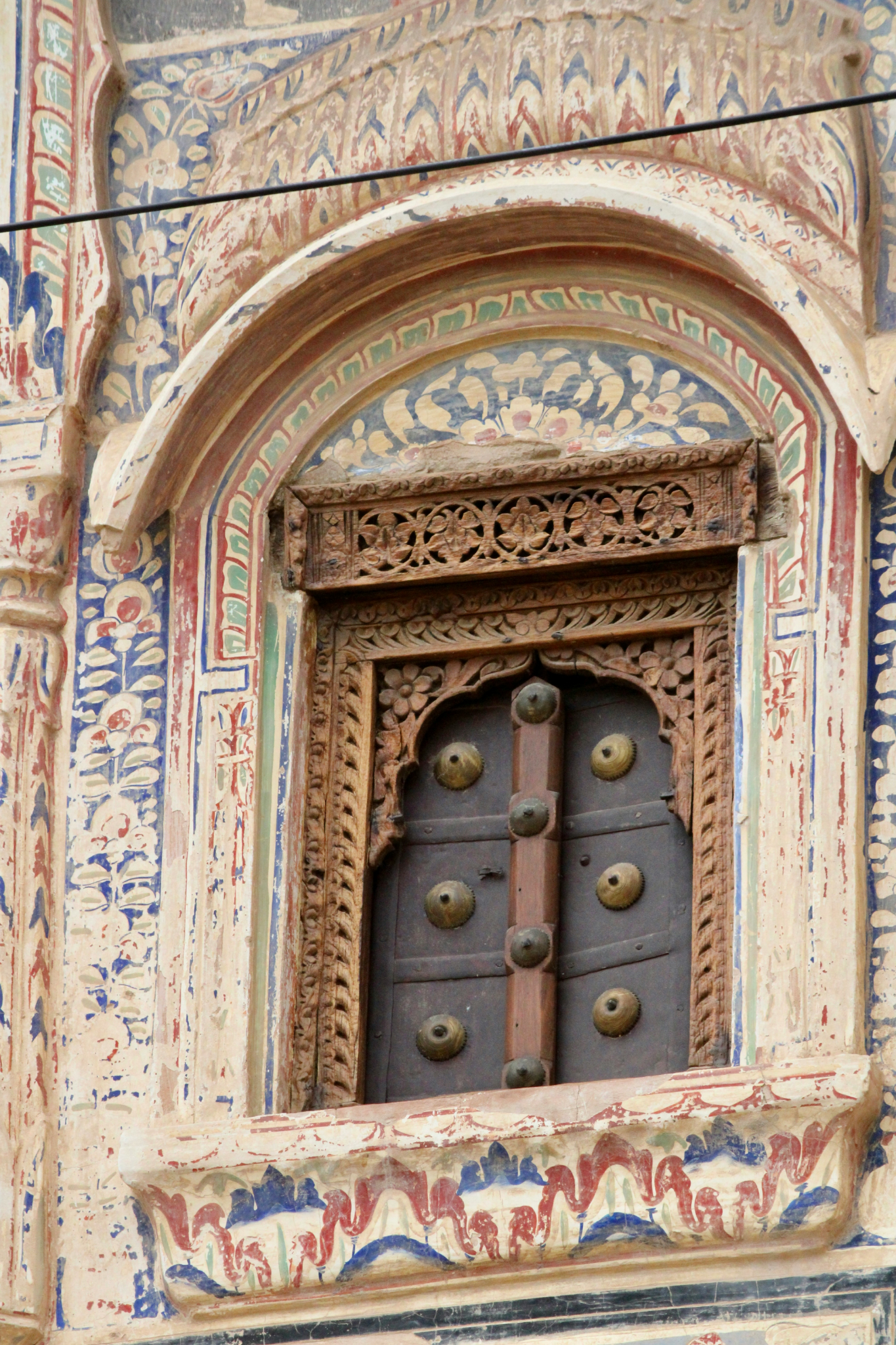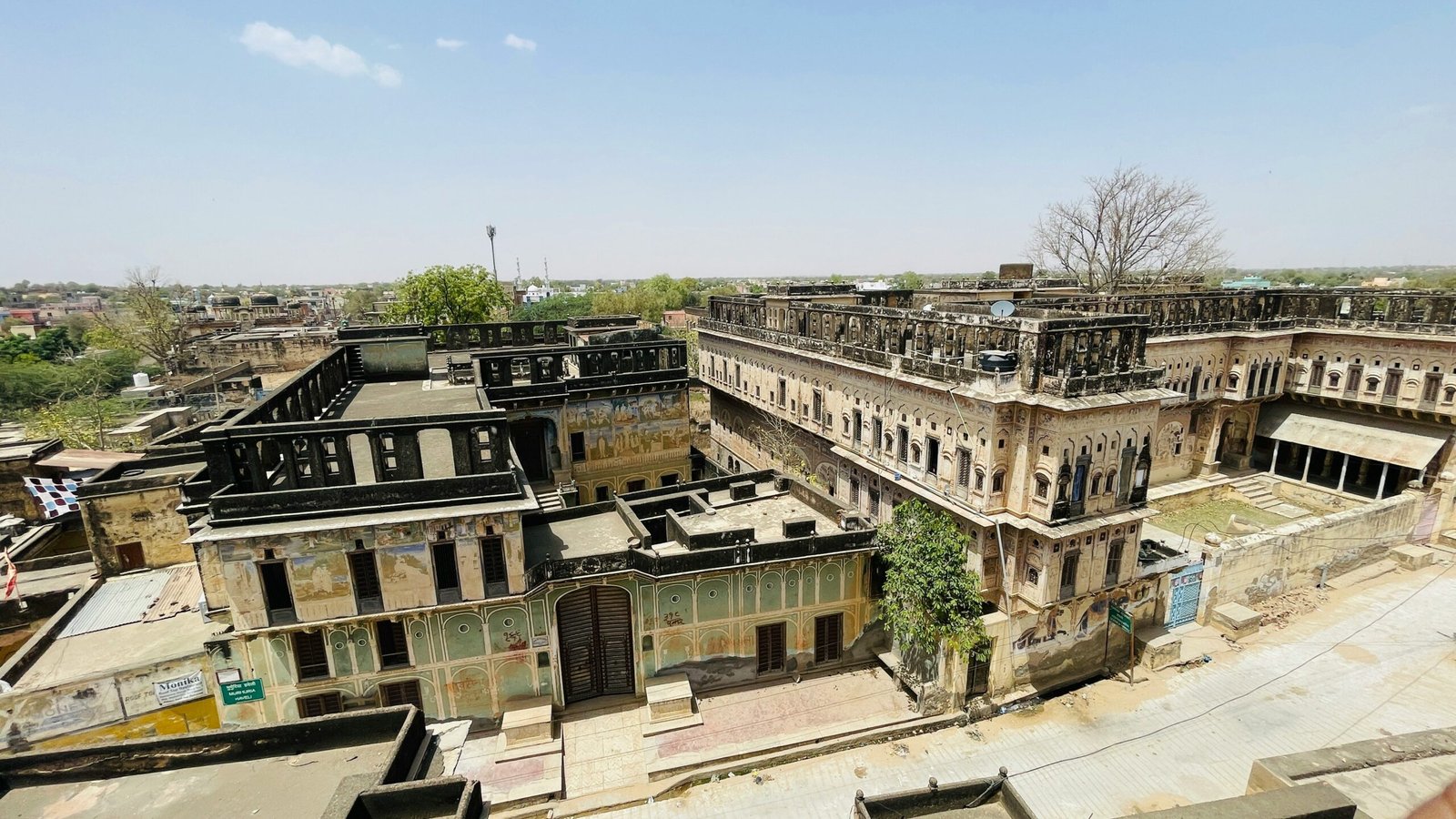
Words & Photography: Mohit Sharma // Additional Photography: Ujjwal
The first time I entered Mandawa, it felt less like arriving in a town and more like stepping into a painted dream. The desert air was sharp, the lanes narrow, and yet everywhere I looked the walls came alive — a horse with wings, gods mid-dance, a train chugging across plaster. In Rajasthan, where kings built forts and merchants built palaces, Mandawa became something else altogether: a canvas.


Stories on the Walls
In the 18th and 19th centuries, the Marwari merchants of Shekhawati grew wealthy as their businesses spread across Bombay, Calcutta, and Madras. Their fortunes travelled home, and in Mandawa, their pride took form in paint. The walls of their havelis became storyboards of progress.
Between Glory and Decay
Walking through Mandawa feels like wandering in a paradox. Children play cricket in the shade of frescoed balconies where angels, though faded, still fly. Old men sip tea at walls that once blazed with indigo and saffron pigments. Some havelis have been restored and turned into boutique stays — like Durga’s own Dera Mandawa, where I spent the night — while others lean precariously, their locked doors guarding artwork that refuses to vanish.
More Than a Museum
What makes Mandawa remarkable is that it is not a museum. It is too alive, too imperfect, too inhabited for that. You can touch the flaking paint with your fingertips, smell cumin and turmeric rising from kitchens, and hear the squeak of a bicycle passing a mural of flying gods. Unlike a gallery where silence is imposed, Mandawa hums with sound. The art belongs to everyone — the hotelier who restores a haveli, the cowherd leading his animals past a fresco, the child chalking hopscotch squares under a mural of deities in flight.
Holding On to Beauty
That evening, as the desert sky deepened into indigo, I sat on a terrace at my hotel watching the havelis below glow softly in lamplight. The frescoes shimmered faintly, as if still holding their last breath of day.
Vikram’s words came back to me: “These walls remind us that beauty is not permanent. But it is stubborn. It clings on, no matter the centuries.” Mandawa is indeed an open-air art gallery. Its admission ticket is curiosity. Its walls do not ask you to be quiet — they ask you to step closer, to listen, and to let the colours tell their stories.

This is an excerpt from the field notes of the Immerse India team’s 2022 journey to Mandawa, shared as part of our Immersive Experiences Series.
Words & Photography: Mohit Sharma
Additional Photography: Amanda. F
Copyright belongs to the authors. All rights reserved.